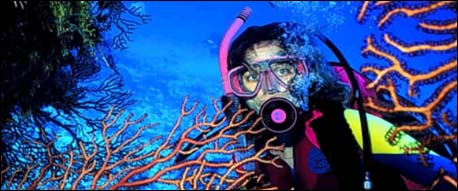
SPONSORED
LINKS
Saturation Diving
Commercial or scientific divers live in an pressurized chamber, for extended period, called saturation diving. The diver's body becomes saturated with gas mixtures corresponding to the working depth. Divers can therefore remain under a constant pressure for weeks or months, rather than go through a lengthy decompression during and after each dive.
The hazards in saturation diving are much like the hazards of living in a space station. Inhabitants depend on life support systems for their air and power supply. Should medical or mechanical difficulties occur, a risky evacuation procedure that requires a series of decompression stops is the only way to bring divers to the surface safely.
Snorkeling
Is a common form of diving on the surface or just below on the surface. A snorkel is a tube that allows the diver to breathe while floating at the water's surface. One end fits in the diver's mouth and the other end extends above the water.
Equalization
When a diver descend, the surrounding water pressure increases, causing a slight discomfort, or squeeze, in their ears and sinuses. Divers relieve this discomfort by holding their noses and blowing gently. This technique is called equalization as it equalizes the pressure within the divers' bodies with that of the surrounding water, allowing them to proceed safely.
OTHER PAGES
3

|